
The Gibson RD Artist is tonally an exceptionally versatile instrument; although the controls are not especially easy to get to grips with. In fact the controls were updated in 1979, the first and second series controls are summarised below.
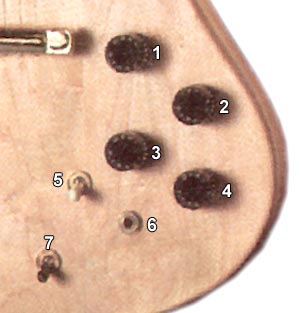
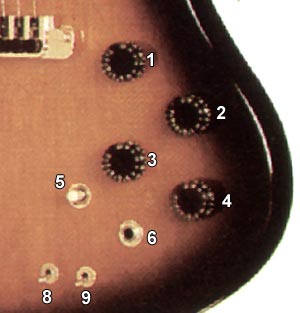
| RD77 | RD79 | |
| 1 (control) | Front pickup volume control | |
| 2 (control) | Bass control | |
| 3 (control) | Back pickup volume control | |
| 4 (control) | Treble control | |
| 5 (3-way switch) | Pickup selector switch | |
| 6 (jack) | Input jack | |
| 7 (3-way switch) | Mode selector switch, 3 position A - Mid-position - "Neutral" - standard, straight ahead active electronics B - Back position - Activates Expansion/Compression mode. Pickup selector switch then engages front pickup for expansion effects, back pickup for compression or combine the two. C - Forward position - "Bright" mode. | |
| 8 (2-way switch) | Forward position - "Neutral" - standard, straight ahead
active electronics Back position - Activates Expansion/Compression mode. Pickup selector switch then engages front pickup for expansion effects, back pickup for compression or combine the two. | |
| 9 (2-way switch) | Forward position - "Neutral" standard, straight ahead
active electronics Back position - "Bright" mode. | |
So initially it would seem that the RD 77 and 79 were just different ways of achieving the same effect - not so! the RD77 does not allow expansion compression AND bright mode simultaneously, whereas the RD 77 does!
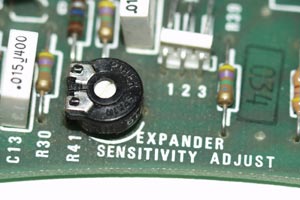
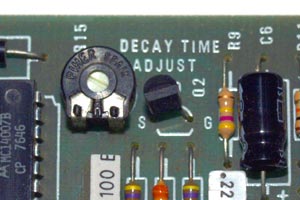

There are a two other potential adjustments on the Moog board itself, both are factory set, but can be adjusted by the user. The first is the Expander sensitivity adjuster. Early models have a small hole on the back of the guitar, in the control panel cover, just big enough for a flat blade screwdriver to adjust this. The effect of this control is self explanatory, and in reality is quite subtle. Obviously this only effects the expansion mode. Later models had a small rubber plug which could be turned with the same effect. The second board-mounted control is the decay time adjuster. Unlike the expansion sensitivity this can not be adjusted without removing the board itself and is probably best left at the factory setting.
The images on the left show these adjusters from the underside of the board. From the assembled board, all you see is a small hole. The image on the right shows the location of the sensitivity expander adjustment on the Moog circuit board. When covered, the plastic cover has a hole or rubber knob in the same place
The controls, although hugely adjustable, are not terrifically intuitive. Perhaps the reason Gibson released a series of sheets in 1978 detailing their operation - obviously this refers to the earlier RD77 version.
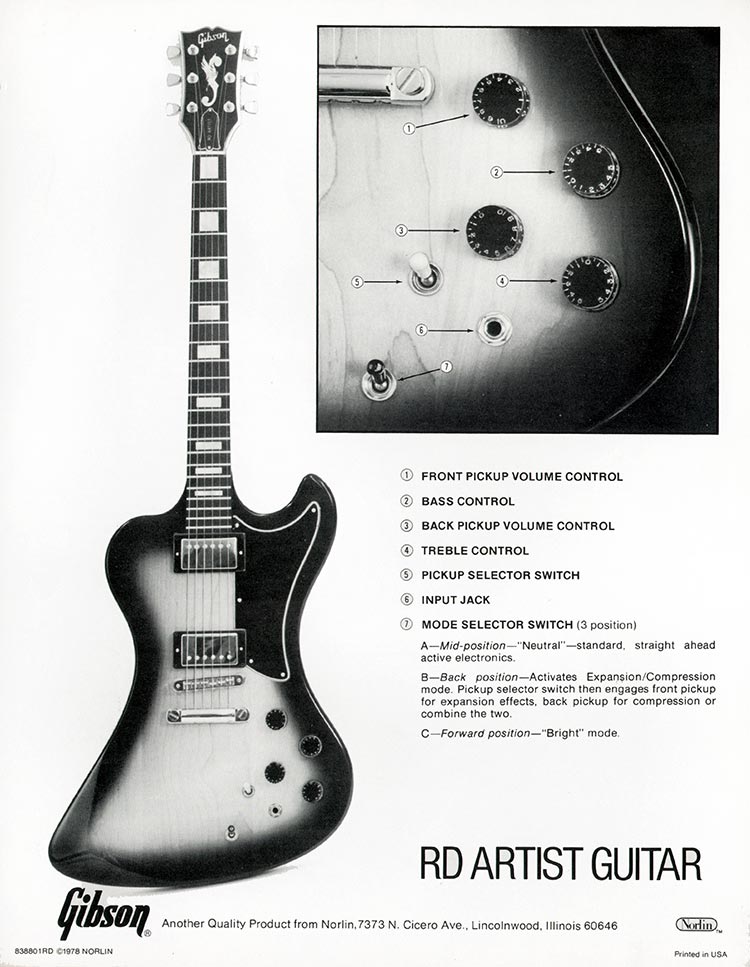
$100
$125
$3199
$3399
$3569
$3995
€490
£2812
£3985
£4399
£5077
AU $4069